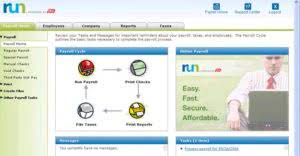Content

Another critical use case for paycheck stubs is proof of income for loans. Banks and real estate agents often accept paycheck stubs as proof of income, allowing employees to rent and buy property or apply for a loan. If the employee is entitled for overtime, the pay stub should additionally show how many hours of overtime they worked. Any incentives received by an employee would likewise be listed under gross earnings.
- Instead, the employer pays the sums directly to the local tax authority or relevant fund.
- Under the Fair Labor Standards Act (FLSA), employers must retain payroll records for three years and save documentation showing how they determined wages for two years.
- For employers, keeping pay stubs is recommended for tax purposes and to prevent any disputes with employees over pay discrepancies.
- For every allowance you take, less money gets withheld for federal taxes and more money gets added to your paycheck.
- A pay statement is a document that summarizes an employee’s gross pay, taxes and deductions, and net pay.
- Net pay is the amount left over after deductions have been taken out of the employee’s gross pay.
Zenefits has easy to use payroll software that will keep you compliant and your records up-to-date. While the “withholding” section contains mandatory deductions, the other sections contain information that you have more control over. You can use information in your paycheck stub to maximize your pay both now and in the future.
Frequently asked questions about pay stubs
However, vocabulary referring to the figurative “pay cheque” persists in some languages, but this commonly refers to a payslip or stub rather than an actual cheque. Some company payrolls have eliminated both the paper cheque and stub, in which case an electronic image of the stub is available on a website. Most of the provinces and territories in Canada allow employers to issue what is a pay stub electronic payslips if the employees have confidential access to it and are able to print it. According to the FLSA, employers must provide employees with employment records typically noted in pay stubs. If an employer doesn’t provide pay stubs, they can provide payment information in different ways, depending on whether they’re located in an Access State or Access/Print State.
However, some states don’t consider electronic pay stubs to be sufficient. In the absence of federal legislation, most states have laws requiring employers to issue pay stubs. Some states do not require a payslip, including Arkansas, Florida, Georgia, Louisiana, Nebraska, Ohio, South Dakota, and Tennessee.
How to Get a Copy of Your Pay Stub
While some jurisdictions do require employers to provide their employees with pay stubs, others don’t. If you’re hiring international talent, you need to know what’s required by law in each country or state your employees work from. Some require that employees have access to pay stubs, while others require that the pay stub be printed and handed to the employee. Additionally, your employees might have certain expenses deducted directly from their paychecks, like insurance premiums and retirement plan contributions.
If you don’t have your pay stub, they are generally easily accessible. In most cases, you can retrieve them digitally by logging into the company payroll website. You were likely given access to it along with login information when https://www.bookstime.com/articles/how-to-find-an-accountant-for-small-business you were initially hired. These deductions can vary depending on your own personal financial situation. If you are a part-time employee, own your own business, or full-time employee, what you can deduct will look very different.
Pay Stub Summary
Gross wages are calculated differently for salaried and hourly employees. To calculate an hourly employee’s gross wages for one pay period, multiply their hourly pay rate by their number of hours worked. To calculate a salaried employee’s gross pay for a single pay period, divide their annual salary by the number of pay periods in the year. The stub is something the employee can use to confirm what funds were withheld from the gross pay that led to the final net pay amount.
A pay stub is a list that breaks down everything earned, taxed, and withheld. The pay stub is important because it serves as a point of reference and accountability for both the employee and the employer. Here’s an example of a generic pay stub provided by the government of Canada.
Deductions
The payroll card company performs required “know-your-customer” due diligence as a condition of accepting the application. For employers, keeping pay stubs is recommended for tax purposes and to prevent any disputes with employees over pay discrepancies. A pay stub is a part of a paycheck that elaborates on the payment details, while a paycheck contains the actual payment owed to the employee.
- If you have paid too much tax, they will calculate the amount you are due and pay you a refund.
- You can calculate net pay by subtracting all the relevant taxes and deductions from the employee’s gross pay.
- Most payroll software can generate pay stubs for employees, making it easy for you to incorporate into your company.
- Some pay stubs may be a little more detailed than others, but the general information provided will be the same.
- If the employee works over 40 hours in a week and is eligible for overtime pay, those hours should be on their pay stub.
- Finally, some employees must have paycheck deductions due to judgements rendered against them, such as child support payments or another legal settlement.
- They will likely provide you with online access or give you physical copies of the pay stubs for any given pay period.
A pay stub is part of a paycheck which details the hours worked, taxes paid and wages earned for a specific pay period and year-to-date payroll. Employees receive either electronic or printed payroll pay stubs, but with the rise of direct deposit, electronic pay stubs are becoming more prevalent. There are no federal laws requiring employers to issue payslips to their employees. Under the Fair Labor Standards Act (FLSA), employers are only required to maintain payroll records for a minimum of three years. However, the FLSA does not guarantee employees a right to view their payroll records. Your employee’s gross wages (sometimes referred to as gross income) are their pre-tax wages.
What are some common deductions?
If your employment tax records are kept in another place, you would still want to hold on to pay stubs and payroll records for at least three years. That’s according to both the Fair Labor Standards Act (FLSA) and the Age Discrimination in Employment Act (ADEA). Employers must also keep at least two years of records showing wage rates, job evaluations, seniority and merit systems, and collective bargaining agreements. These would explain the basis for paying different wages to employees of opposite sexes in the same establishment.

Pay stubs give your employees key insights into their gross pay—and what deductions are being taken out of their checks each pay period. If you are a government employee receiving payment from the state, you can often request copies of pay stubs directly from the state government website. In New York, for example, you just need to input some personal information, as well as the pay period you are asking for.
How long should you keep pay stubs?
The information contained within a pay statement is subject to federal and state employment recordkeeping laws. The IRS requires employment tax records to be saved for four years after filing fourth-quarter taxes for the year. Under the Fair Labor Standards Act (FLSA), employers must retain payroll records for three years and save documentation showing how they determined wages for two years. If a state has different requirements than the federal government, employers must abide by whichever length of recordkeeping is greater.